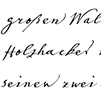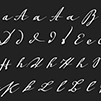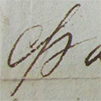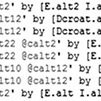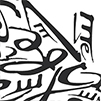VUK
Reconstruction of handwriting of
Vuk Stefanovic Karadzic
Marija Rnjak and Vedran Eraković
29 February to 12 March 2016
Grafički kolektiv Gallery, Belgrade
Typeface Vuk is a reconstruction of manuscripts of Vuk Stefanovic Karadzic, on the basis of original documents kept in the archives of the Serbian Academy of Sciences and Arts in Belgrade.
The project started in mid-2012 and was completed this year. Vuk’shandwriting changed over time, so in the course of the project it was necessary to review hundreds of Vuk’s documents, letters and memos, in order to select the most suitable varieties and singled out individual letters. Care was taken that the text is easy to read, and the font is usable, thuschosen letterformsoriginate from Vuk’s mature period, come from a combination of spontaneous and, in the same time, controlled strokes. Next, there was hard work on the adjusting of drawings, spacing and kerning in programs for image processing and typeface design.
The specificity of this typeface is reflected in the fact that each letter and sign exists in several different variants. These variants are replaced according to the established order, depending on whether the characters that are entered into the text are situated at the beginning, at the end or in the middle of the word, and based on the shape of characters that are in its immediate vicinity. Thanks to extensive and complex OpenType programming, the same form can not appear beforeall its variants are used. In this way, this typeface faithfully mimics handwriting, ie comply with all the characteristics of Vuk's personal handwriting. Even the dates have a specific look, as they were written by Vuk, andfont user is able to access, in a very simple way,the different variants of Vuk’s signatures – Cyrillic, Latin, Serbian and German. Thanks to the aforementioned characteristics, complex texts in this script look like they were really written by Vuk S. Karadzic.
The typeface Vuk comprises all the letters and characters that are essential toa large number of important world languages, which opens the possibility for its use beyond the borders of our country, and therefore, the wider promotion of our culture.
The authors' intention isto remind by this project of the importance of Vuk's work, and to contribute to the additional interest in his life and work, our heritage and script.




